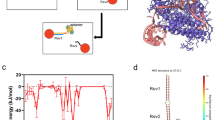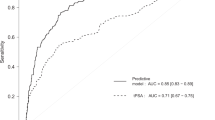Abstract
Prostate-specific antigen (PSA) is used to screen for prostate disease, although it has several limitations in its application as an organ-specific or cancer-specific marker. Furthermore, a highly specific/sensitive and/or label-free identification of PSA still remains a challenge in the diagnosis of prostate anomalies. We aimed to develop a gold nanoparticle (GNP)-conjugated anti-PSA antibody-based localized surface plasmon resonance (LSPR) as a novel approach to detect prostatic disease. A total of 25 nm colloidal gold particles were prepared followed by conjugation with anti-PSA pAb (GNPs–PSA pAb). LSPR was used to monitor the absorption changes of the aggregation of the particles. The size, shape and stability of the GNP-anti-PSA were evaluated by dynamic light scattering transmission electron microscopy (TEM) and zetasizer. The GNPs-conjugated PSA-pAb was successfully synthesized and subsequently characterized using ultraviolet absorption spectroscopy and TEM to determine the size distribution, crystallinity and stability of the particles (for example, stability of GNP: 443 mV). To increase the stability of the particles, we pegylated GNPs using an N-(3-dimethylaminopropyl)-N*-ethylcarbodiimide hydrochloride (EDC)/N-hydroxylsuccinimide (NHS) linker (for example, stability of GNP after pegylation: 272 mV). We found a significant increase in the absorbance and intensity of the particles with extinction peak at 545/2 nm, which was shifted by ~1 nm after conjugation. To illustrate the potential of the GNPs–PSA pAb to bind specifically to PSA, LSPR was used. We found that the extinction peak shifted 3 nm for a solution of 100 nM unlabeled antigen. In summary, we have established a novel approach for improving the efficacy/sensitivity of PSA in the assessment of prostate disease, supporting further investigation on the diagnostic value of GNP-conjugated anti-PSA/LSPR for the detection of prostate cancer.
This is a preview of subscription content, access via your institution
Access options
Subscribe to this journal
Receive 12 print issues and online access
$259.00 per year
only $21.58 per issue
Buy this article
- Purchase on Springer Link
- Instant access to full article PDF
Prices may be subject to local taxes which are calculated during checkout


Similar content being viewed by others
References
Etzioni R, Urban N, Ramsey S, McIntosh M, Schwartz S, Reid B et al. The case for early detection. Nat Rev Cancer 2003; 3: 243–252.
Srinivas PR, Kramer BS, Srivastava S . Trends in biomarker research for cancer detection. Lancet Oncol 2001; 2: 698–704.
Zheng G, Patolsky F, Cui Y, Wang WU, Lieber CM . Multiplexed electrical detection of cancer markers with nanowire sensor arrays. Nat Biotechnol 2005; 23: 1294–1301.
Jedinak A, Curatolo A, Zurakowski D, Dillon S, Bhasin MK, Libermann TA et al. Novel non-invasive biomarkers that distinguish between benign prostate hyperplasia and prostate cancer. BMC Cancer 2015; 15: 1.
De Bono JS, Logothetis CJ, Molina A, Fizazi K, North S, Chu L et al. Abiraterone and increased survival in metastatic prostate cancer. N Engl J Med 2011; 364: 1995–2005.
Liu X, Dai Q, Austin L, Coutts J, Knowles G, Zou J et al. A one-step homogeneous immunoassay for cancer biomarker detection using gold nanoparticle probes coupled with dynamic light scattering. J Am Chem Soc 2008; 130: 2780–2782.
Endo T, Kerman K, Nagatani N, Hiepa HM, Kim D-K, Yonezawa Y et al. Multiple label-free detection of antigen-antibody reaction using localized surface plasmon resonance-based core-shell structured nanoparticle layer nanochip. Anal Chem 2006; 78: 6465–6475.
Boniol M, Autier P, Perrin P, Boyle P . Variation of prostate-specific antigen value in men and risk of high-grade prostate cancer: analysis of the prostate, lung, colorectal, and ovarian cancer screening trial study. Urology 2015; 85: 1117–1122.
Miano R, Mele G, Germani S, Bove P, Sansalone S, Pugliese P et al. Evaluation of a new, rapid, qualitative, one-step PSA Test for prostate cancer screening: the PSA RapidScreen test. Prostate Cancer Prostatic Dis 2005; 8: 219–223.
Kumari GR, Malati T . Stability of total and free prostate specific antigen in serum samples at different storage conditions. Indian J Clin Biochem 2004; 19: 10–13.
Luo X, Morrin A, Killard AJ, Smyth MR . Application of nanoparticles in electrochemical sensors and biosensors. Electroanalysis 2006; 18: 319–326.
Chumbimuni-Torres KY, Dai Z, Rubinova N, Xiang Y, Pretsch E, Wang J et al. Potentiometric biosensing of proteins with ultrasensitive ion-selective microelectrodes and nanoparticle labels. J Am Chem Soc 2006; 128: 13676–13677.
Halpern AR, Wood JB, Wang Y, Corn RM . Single-nanoparticle near-infrared surface plasmon resonance microscopy for real-time measurements of DNA hybridization adsorption. ACS nano 2013; 8: 1022–1030.
Kumar A, Boruah BM, Liang X-J . Gold nanoparticles: promising nanomaterials for the diagnosis of cancer and HIV/AIDS. J Nanomater 2011; 2011: 22.
Sepúlveda B, Angelomé PC, Lechuga LM, Liz-Marzán LM . LSPR-based nanobiosensors. Nano Today 2009; 4: 244–251.
Willets KA, Van Duyne RP . Localized surface plasmon resonance spectroscopy and sensing. Annu Rev Phys Chem 2007; 58: 267–297.
Brolo AG . Plasmonics for future biosensors. Nat Photon 2012; 6: 709–713.
Frens G . Controlled nucleation for the regulation of the particle size in monodisperse gold suspensions. Nature 1973; 241: 20–22.
Jazayeri MH, Amani H, Pourfatollah AA, Pazoki-Toroudi H, Sedighimoghaddam B . Various methods of gold nanoparticles (GNPs) conjugation to antibodies. Sens BioSensing Res 2016; 9: 17–22.
Amendola V . Surface plasmon resonance of silver and gold nanoparticles in the proximity of graphene studied using the discrete dipole approximation method. Phys Chem Chem Phys 2016; 18: 2230–2241.
Mousavi MZ, Chen H-Y, Wu S-H, Peng S-W, Lee K-L, Wei P-K et al. Magnetic nanoparticle-enhanced SPR on gold nanoslits for ultra-sensitive, label-free detection of nucleic acid biomarkers. Analyst 2013; 138: 2740–2748.
Van de Broek B, Frederix F, Bonroy K, Jans H, Maes G, Borghs G Shape-controlled synthesis and functionalization of gold nanoparticles for hyperthermia applications. Nanotechnology 2011; 22: 015601.
Kira A, Matsuo K, Nakajima S-i . DNA hybridization activity of single-stranded DNA-conjugated gold nanoparticles used as probes for DNA detection. Jpn J Appl Phys 2015; 55: 02BE4.
Guo L, Kim D-H . LSPR biomolecular assay with high sensitivity induced by aptamer–antigen–antibody sandwich complex. Biosens Bioelectron 2012; 31: 567–570.
Huang Y, Kannan P, Zhang L, Chen T, Kim D-H . Concave gold nanoparticle-based highly sensitive electrochemical IgG immunobiosensor for the detection of antibody–antigen interactions. RSC Adv 2015; 5: 58478–58484.
Taguchi T, Isozaki K, Miki K . Enhanced catalytic activity of self‐assembled‐monolayer‐capped gold nanoparticles. Adv Mater 2012; 24: 6462–6467.
Aćimović SS, Ortega MA, Sanz V, Berthelot J, Garcia-Cordero JL, Renger J et al. LSPR chip for parallel, rapid, and sensitive detection of cancer markers in serum. Nano Lett 2014; 14: 2636–2641.
Arkan E, Saber R, Karimi Z, Mostafaie A, Shamsipur M . Multiwall carbon nanotube-ionic liquid electrode modified with gold nanoparticles as a base for preparation of a novel impedimetric immunosensor for low level detection of human serum albumin in biological fluids. J Pharm Biomed Anal 2014; 92: 74–81.
Rayavarapu RG, Petersen W, Ungureanu C, Post JN, van Leeuwen TG, Manohar S . Synthesis and bioconjugation of gold nanoparticles as potential molecular probes for light-based imaging techniques. J Biomed Imaging 2007; 2007: 5.
Kumar S, Aaron J, Sokolov K . Directional conjugation of antibodies to nanoparticles for synthesis of multiplexed optical contrast agents with both delivery and targeting moieties. Nat Protoc 2008; 3: 314–320.
Acknowledgements
This study was financially supported by a research grant from Iran National Science Foundation.
Author information
Authors and Affiliations
Corresponding author
Ethics declarations
Competing interests
The authors declare no conflict of interest.
Rights and permissions
About this article
Cite this article
Jazayeri, M., Amani, H., Pourfatollah, A. et al. Enhanced detection sensitivity of prostate-specific antigen via PSA-conjugated gold nanoparticles based on localized surface plasmon resonance: GNP-coated anti-PSA/LSPR as a novel approach for the identification of prostate anomalies. Cancer Gene Ther 23, 365–369 (2016). https://doi.org/10.1038/cgt.2016.42
Received:
Revised:
Accepted:
Published:
Issue Date:
DOI: https://doi.org/10.1038/cgt.2016.42
This article is cited by
-
Recent Advances in Electrochemical and Optical Biosensors for Cancer Biomarker Detection
BioChip Journal (2023)
-
Anti-Caspr-conjugated gold nanoparticles emergence as a novel approach in the treatment of EAE animal model
Metabolic Brain Disease (2022)
-
Human placental extract attenuates neurological symptoms in the experimental autoimmune encephalomyelitis model of multiple sclerosis-a putative approach in MS disease?
Autoimmunity Highlights (2020)
-
Rapid noninvasive detection of bladder cancer using survivin antibody-conjugated gold nanoparticles (GNPs) based on localized surface plasmon resonance (LSPR)
Cancer Immunology, Immunotherapy (2020)
-
Targeting necroptotic cell death pathway by high-intensity interval training (HIIT) decreases development of post-ischemic adverse remodelling after myocardial ischemia / reperfusion injury
Journal of Cell Communication and Signaling (2019)



